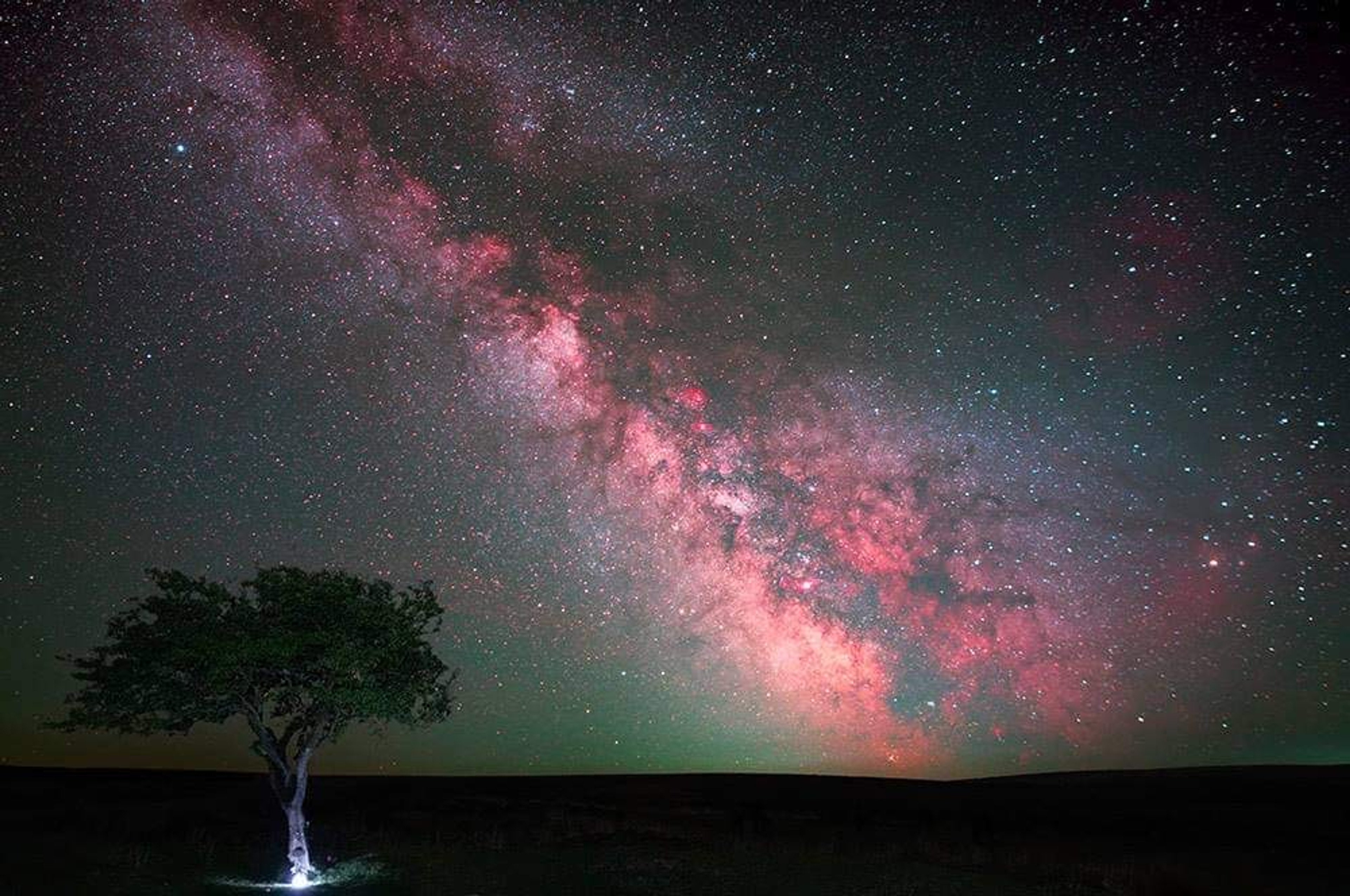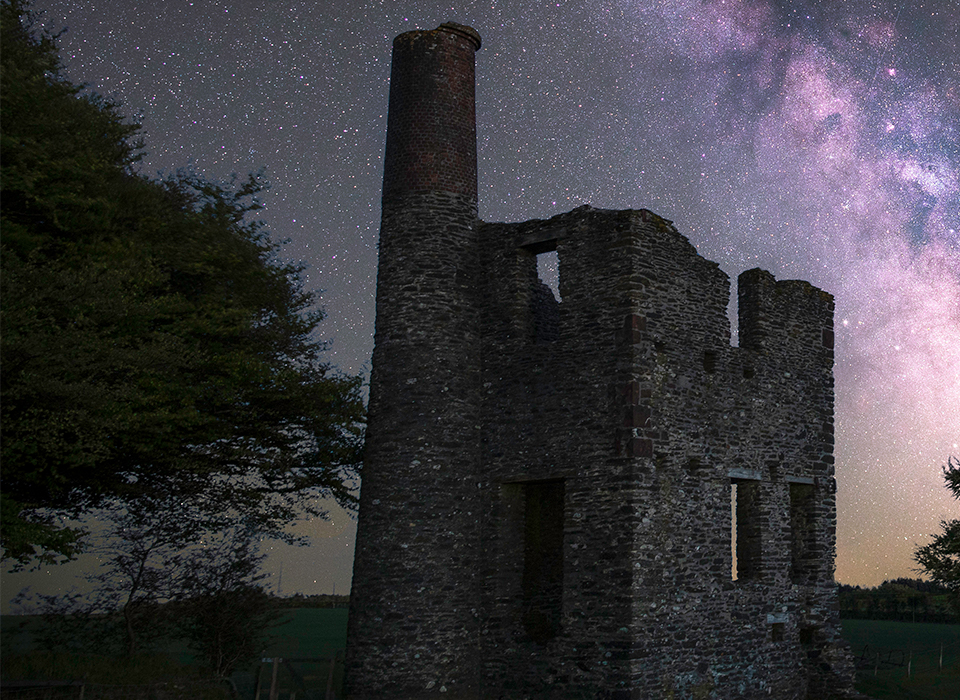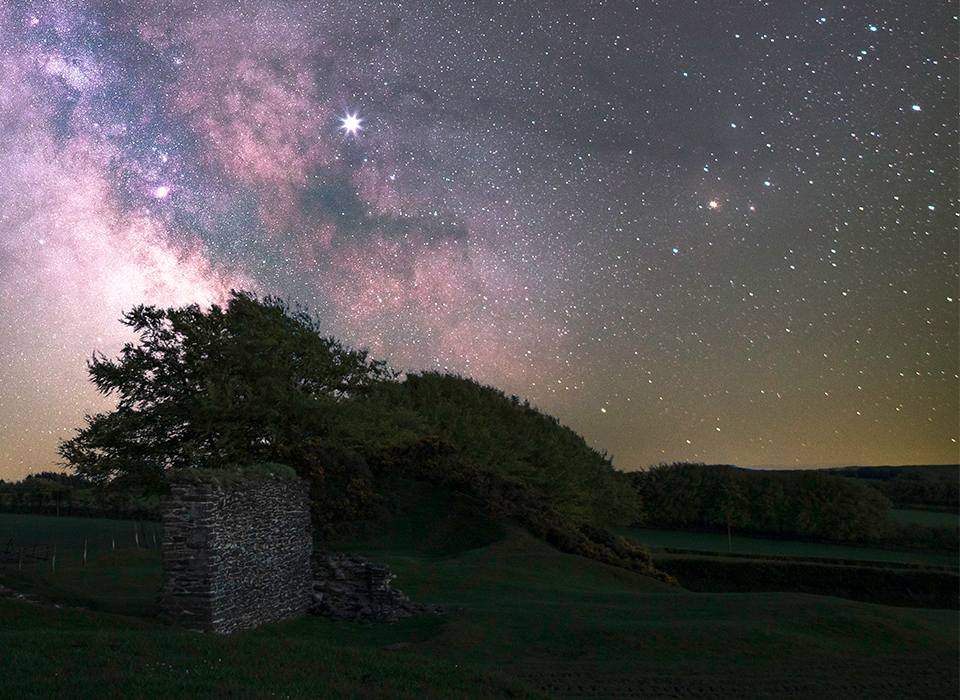An inspiration towards reclaiming the UK's dark skies.

Exmoor National Park
11/16/2021
The Exmoor Society is an independent charity that protects and promotes Exmoor for the benefit of all and is the only membership organisation that is dedicated to the National Park status. Exmoor is a unique, diverse landscape of moorland, coast, woodland, and farmland shaped by both nature and people over thousands of years. Established in 1958, the Society acts as a champion and watchdog for conservation and the enjoyment of natural beauty, wildlife, and cultural heritage, values very much shared by Rohan. It searches for solutions to today’s challenges, such as loss of heather moorland, by gathering evidence to influence rural decision-makers both locally and nationally.
Exmoor National Park welcomes over 2 million visitors every year. It is famous for its wealth of different landscapes, diverse wildlife, and cultural heritage. However, a feature that is not often appreciated about Exmoor is the quality of its dark skies.

In 2011, Exmoor was designated an International Dark Sky Reserve by the International Dark Sky Association. As the first Dark Sky Reserve in Europe (there are only 18 globally) Exmoor offers some of the best sites for observing the night sky in the UK due to its limited light pollution and 360° views. From within the National Park, astronomers can not only observe star constellations and planets such as Venus and Mars, but also our neighbouring galaxy Andromeda which is approximately 2.5 million light years away.
To celebrate the 10th year of Exmoor becoming a Dark Sky Reserve, the Exmoor Society decided to dedicate its annual spring conference to ‘Nocturnal Exmoor’ and examine the importance of dark skies to various aspects of life including wildlife, farming practises, the modern arts and tourism. A recurrent theme, and one that is highly managed within the park, is that of light pollution. Light is so integral to human activity, that many people are unaware of the detrimental effect that light pollution has to the natural world.
Light pollution is classed as the ‘inappropriate or excessive use of artificial light’. [1] Artificial light such as streetlights, although necessary for health and safety reasons, are often highly ineffective as light is usually poorly directed causing undesirable brightness in the form of glare and sky glow. [2] This ultimately blocks our ability to observe the night sky. In Exmoor, where light pollution is tightly controlled, you can expect to see 1000 stars with the naked eye. Travel a mere 15 miles to the nearest town of Taunton outside of the Dark Sky Reserve, and this number dramatically plummets to below 50 stars. [3]
Alongside interfering with our ability to observe the night sky, light pollution seriously disrupts wildlife whose life cycles depend on the dark. For example, moths are extremely light sensitive, and studies show that as artificial light increases, the relative abundance and the ability for moths to feed and mate significantly decreases. Considering it takes 10,000 moth caterpillars to feed one brood of blue tits (this equates to 150 trillion caterpillars a year to feed all UK blue tits) it is clear to see how light pollution not only interferes with the biology of certain species but can disrupt entire food chains. [4]
Unlike many aspects of human influence on the natural world, light pollution is completely reversible. For example, pulling curtains and switching lights off are the most effective methods of reducing light pollution. In cases where outside lighting is essential, consideration should go into the type of light fitting used. Globe lighting is the worst for pollution as light is ‘wasted’ by illuminating the sky rather than where it is needed. The best options are ‘shielded’ lights which direct light and thus minimises sky glow and light trespass. [5]
All the above actions and more are so important if we want to reclaim our dark skies and reduce our impact on nocturnal wildlife. By being creative with the way we use light, star-studded skies and glimpses of the milky way could be part of our future, wherever we are in the country. Until then, Exmoor offers us the ability to experience the beauty and wonder of truly dark skies and provide inspiration to all who visit regarding the potential of UK dark skies.

[2] International Dark Sky Association (2021) Light Pollution (online.)
[4] Richardson, J (2021) Astronomical dark skies and their importance (online.)
[5] Mathews, F. (2021) Nocturnal Wildlife (online.)
[6] International Dark Sky Association (2021)
Additional Resources available below:
Nocturnal Exmoor Webinars (Exmoor Society)
Astronomers Guide to Exmoor (Exmoor National Park Authority)
List of Dark Sky events in Exmoor